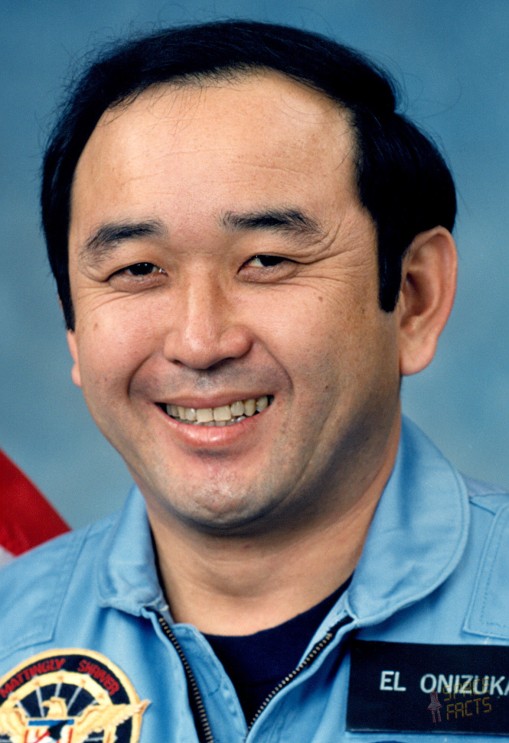
Ellison S. Onizuka made the ultimate sacrifice and lost his life in
service to his nation and the international space community on January
28, 1986 at 39 years of age.
Ellison was 15 where the Mercury mission put an American astronaut in space for the first time. His mother said,
Ellison always had it in his mind to become an astronaut but was too embarrassed to tell anyone […] When he was growing up, there were no Asian astronauts, no black astronauts, just white ones. His dream seemed too big.
Ellison Onizuka (I’m starting to use full names so reinforced that you can name names. Ellison Onizuka. Ellison Onizuka. Ellison Onizuka) liked to visit the Bishop Museum in Honolulu to look through its immense telescope at the heavens. A well–rounded student, he was a good athlete, an Eagle Scout, and practicing Buddhist which linked him to his Japanese heritage.
Ellison was a member of the Air Force ROTC and Triangle Fraternity at the University of Colorado (Boulder) and received a BA and Masters in aerospace engineering. He got married the same month he graduated with his undergraduate degree to Lorna Yoshida.
The next year in 1970, Ellison entered the U.S. Air Force and worked as a aerospace flight test engineer. His projects included devising ways to salvage American military aircraft that had been downed in the Vietnam War. Four years later, he attended the U.S. Air Force Test Pilot School and became a test pilot in 1975 where he logged more than 1,700 flight hours.
Ellison completed the astronaut evaluation and training program in August 1979 with a class of 35 astronauts. Speaking to the 1980 graduating class of Konawaena High School, his alma mater, he told them that it was their duty to pursue science past the known boundaries. He said,
Many things that you take for granted were considered unrealistic dreams by previous generations. If you accept these past accomplishments as commonplace then think of the new horizons that you can explore.
His first space mission was a historic one–the first space shuttle mission for the Department of Defense on January 24, 1985 in Space Shuttle Discovery. The Discovery circled the Earth 48 times; he spent 3 days, 1 hour, 33 minutes in space.
Ellison Onizuka was awed,
You’re really aware that you’re on top of a monster, you’re totally at the mercy of the vehicle […] I still pinch myself to convince myself that the dream came true.
About a year later, Lieutenant Colonel Ellison Onizuka, father of two daughters, died at 11:38 am on Space Shuttle Challenger at Kennedy Space Center in Cape Canaveral, Florida. At first, it appeared to be a successful launch, traveling at 1,900 miles per hour.
At 73 seconds after takeoff, a flash of orange near the fuel tank was seen and soon turned into a fireball. All 7 crew members were killed as onlookers watched in horror in what became the worst accident in the history of the U.S. space program to date.
At his funeral, Bishop Seigen Yamoaka told the newspaper
As a test pilot and an astronaut, [Ellison Onizuka] had to deal with life and death […] As long as death is seen as the enemy, you fight it, and become more attached to life. In time, he came to the realization that death is not an enemy to defeat, but a compassionate friend.
Ellison was promoted to the rank of Colonel and awarded the Purple Heart medal after the accident. Google “Astronaut Ellison Onizuka” to learn more.
Source
http://en.wikipedia.org/wiki/Ellison_Onizuka
http://www.jsc.nasa.gov/Bios/htmlbios/onizuka.html
Remember those who came before you…
